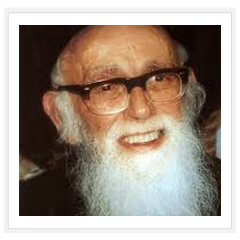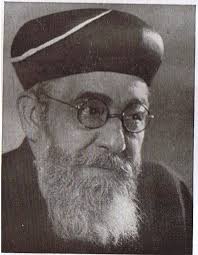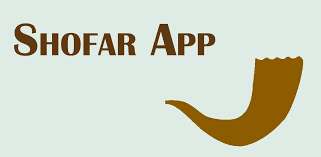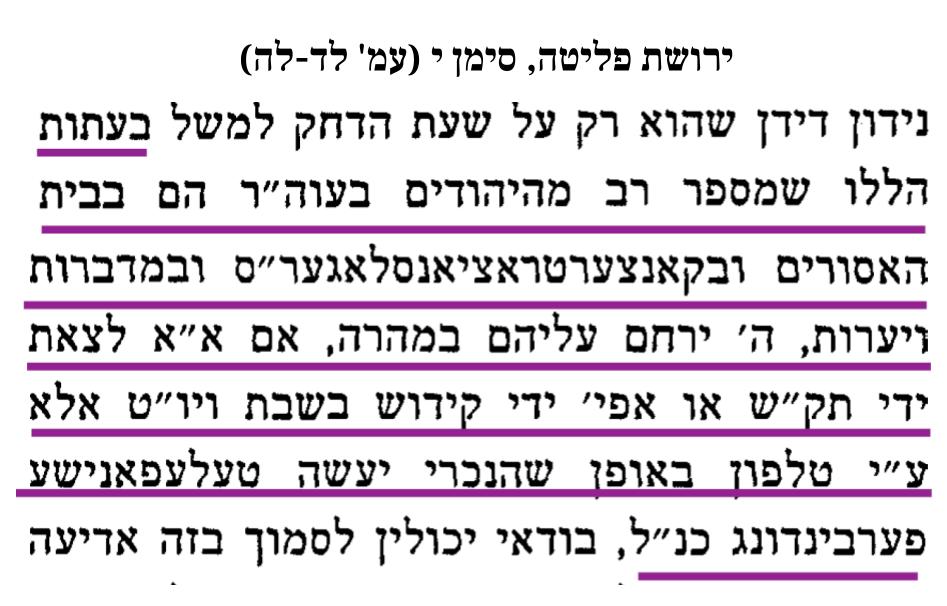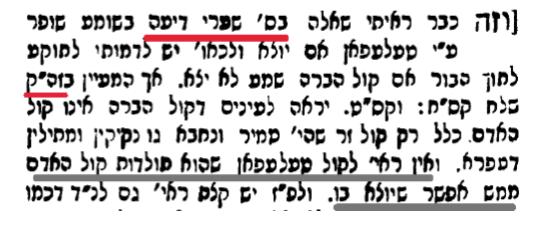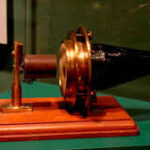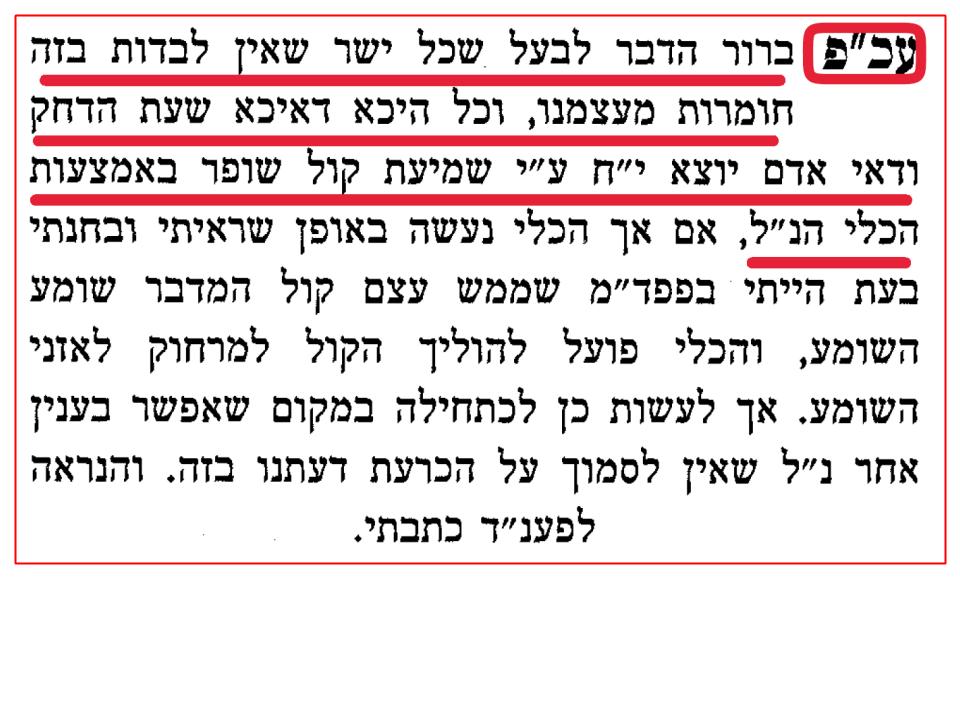Mitzvot at a Distance: the Requirement to Leverage Zoom as a tool of Inclusion
 There are times when Halakhic deliberation can feel removed from the everyday life of the average person. However, the current conversation about using Zoom for the fulfillment of Mitzvot will have long-term implications for the shape of our community. Some poskim are not willing to rely on webcams except in the most dire circumstances when no viable safe alternative exists. That approach is based on an assumption that fulfilling Mitzvot remotely is substantially suboptimal. I believe, however, that narrow approach is not the best reading of the sources and represents a minority position over the past 150 years.
There are times when Halakhic deliberation can feel removed from the everyday life of the average person. However, the current conversation about using Zoom for the fulfillment of Mitzvot will have long-term implications for the shape of our community. Some poskim are not willing to rely on webcams except in the most dire circumstances when no viable safe alternative exists. That approach is based on an assumption that fulfilling Mitzvot remotely is substantially suboptimal. I believe, however, that narrow approach is not the best reading of the sources and represents a minority position over the past 150 years.
For interested readers, I offer links to all the teshuvot in their original throughout the document. In addition, the footnotes contain much of the Halakhic analysis. I am well aware of the risks that embracing Zoom brings to synagogue life. However, I believe deeply that the benefits of inclusion far outweigh those risks. The reality is that we have all learned, over the past year, the strengths and weaknesses of Zoom and similar platforms. I hunger for the in-person experience of social interaction for which online alternatives offer only a mild approximation. However, for those people who may not be able to ever enter the building, conferencing software offers a light of connection that has been absent for too many years.
Part I: The bottom line according to major poskim:
There are five different approaches to the question of fulfilling Mitzvot from a distance.
Group One: the most inclusive poskim allow for any Mitzvah of sound to be fulfilled over the telephone or via a webcam1. This approach includes Shofar2, as well as the reading of the Megilla, Torah reading, Kedusha and Berachu (all assuming the physical presence of a minyan when required)3.
Group Two: A second group allows only those Mitzvot that are fulfilled through the mechanism of שומע כעונה — which again includes the reading of the Megilla, Torah reading, Kedusha and Berachu — but excludes the Shofar because of a technical limitation requiring people to hear the actual sound of the Shofar4.
Rav Moshe Feinstein occupies a kind of middle ground between the most inclusive and most restrictive approach in that he appears only to allow Rabbinic Mitzvot but not Torah commandments to be fulfilled over the phone. He is also only willing to permit when there a high level of need5.
Group Three: There is a specific conceptual move made by a group of early poskim that shift all of the limitations of Shofar onto every other Mitzvah that is fulfilled through speech. Just as there is a requirement to hear the קול שופר (the sound of the Shofar) and not the קול הברה (the sound of the echo), they assert that in order to fulfill any Mitzvah of speech you must hear the voice of the person speaking. Both Rav Chaim Berlin in 1905 and Rav Benzion Uziel, just two years later, make this claim6.
Rav Shlomo Zalman Auerbach became the champion of the idea that hearing via a telephone (microphone, webcam or hearing aid) is simply not considered “hearing” for the purposes of Halakha. Not only does the Shofar not work via a digital medium but, so too, any Mitzvah that is dependant on שומע כעונה requires the hearing of the actual voice of the person leading on one’s behalf. Rav Shlomo Zalman’s claim is different from group three as he basically thinks that hearing through any digital medium is akin to listening to a recording. Even if the experience of the transfer of sound is apparently immediate, since the sound is being transmitted the listener is imply not hearing a human voice at all7.
| Shofar | Mitzvot of Speech | |
| Group One | Yes | Yes |
| Group Two | No | Yes |
| Rav Moshe Feinstein | No | Only Rabbinic |
| Group Three | No | No
(extended from Shofar) |
| Rav Shlomo Zalman | No | No |
The majority of poskim either fall into group one or group two. Rav Moshe’s position is basically sui generis. While many refer to Rav Shlomo Zalman, most ultimately assume that a hearing aid works for the fulfillment of Mitzvot of speech. The extension from shofar to all other speech based Mitzvot is difficult to substantiate, and is a minority voice. Therefore, I believe that we should pasken in accordance with group two who represent the best read of the sources and at least a plurality of the major poskim – thought perhaps the majority (depending on how we define, “major”).
Part II: The implications of my psak:
The second approach, allowing for all Mitzvot that rely on שומע כעונה, shomea ka’oneh, but not permitting Shofar, accounts best for both the texts of Halakha as well as the lived experience of the phone and web-conferencing. When we talk and learn over Zoom, we all know intellectually that there is a short delay, and yet we also understand that we are having a live interaction with another human being and not listening to a recording. The unique requirements of Shofar, however, place a particular limitation that makes it difficult to imagine that the digitized sound travelling over the wires can reasonably be said to be the actual sound of the Shofar.
This psak creates a series of opportunities and, I believe, responsibilities for shuls today. One of the hard lessons we have learned over this past year is that many people have a strong desire to participate in the religious lives of our communities but are not able to be in person for a range of legitimate reasons. For too long, we felt that we could ignore those individuals and their concerns. Perhaps we did so unwittingly, but we can no longer afford to shield our eyes from those who seek to join but for whom being physically in the room is simply not an option.
So many of our coreligionists fall into this group: the elderly and homebound, people with a range of physical limitations, those who struggle emotionally with large crowds, those who are immunosuppressed (separate from Covid concerns), those who live too far away, those who need to move around too much to sit comfortably in shul, parents of young children. And the list goes on.
We need to commit, as a community, to finding ways to give virtual access to the Mitzvot that happen inside the four walls of our shuls on ימות החול, weekdays. Doing so has several practical implications:
- Shuls need to invest in resources to establish a stable internet connection, a camera and a speaker to allow people who are outside the building to participate in shul. These technologies need to be employed thoughtfully, with the user’s experience in mind, and enhanced or altered if the user feels unnecessarily distanced or separate from the activity in shul; these technologies can be used very well or very poorly, so someone on the shul staff needs to be trained in their use and responsible for ensuring their optimal performance. Access should be given to all non-Shabbat and Yomtov events, such as daily minyanim, classes, lifecycle celebrations and events.
- Just as we may no longer build shuls that have steps up to a bima, which limit physical access to the Torah, any new construction must include the cost of this relatively simple technological setup.
- I would recommend that we create a small guidebook to help shuls enact these inclusionary steps.
- In addition, perhaps a small communal fund could be generated to help incentivize as many shuls as possible to undertake these changes.
It is essential that we begin planning carefully and strategically for life after the pandemic, ב”ה. Rabbis in particular, and religious leaders in general, need to grasp this moment and help propel us into a future that imagines more opportunities for more members of our community to engage in Jewish life. With God’s help, and the help of the doctors and the vaccines, may we be blessed to gather next Purim AND also provide virtual portals of entry for Jews the world over.
 We all know that this year’s Rosh ha-Shanna will be vastly different from holidays of prior years. We will not be buoyed by the voices of hundreds as we sing the
We all know that this year’s Rosh ha-Shanna will be vastly different from holidays of prior years. We will not be buoyed by the voices of hundreds as we sing the  [See
[See 
